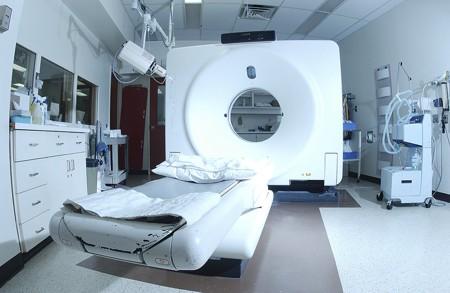
January 25, 2010 – Physicians’ reduce radiation dose by 20 percent exposure to emergency department patients with suspected PE without compromising patient safety in response to an educational intervention, reported a study published in the February issue of American Roentgen Ray Society.
Researchers in the Department of Radiology, Albert Einstein College of Medicine, Bronx, NY, set out to determine whether the radiation exposure to patients with suspected pulmonary embolism (PE) could be decreased by safely increasing the use of ventilation–perfusion (V/Q) scanning and decreasing the use of CT pulmonary angiography (CTPA) through an educational intervention.
The collaborative educational seminars were held among the radiology, nuclear medicine, and emergency medicine departments in December 2006 and January 2007, regarding the radiation dose and accuracies of V/Q scanning and CTPA for diagnosing PE. An imaging algorithm was introduced for reducing radiation exposure, which physicians applied to emergency department patients with a clinical suspicion of PE underwent chest radiography. If the chest radiograph was normal, V/Q scanning was recommended, otherwise CTPA was recommended.
The researchers retrospectively tracked the number and results of CTPA and V/Q scanning and calculated mean radiation effective dose before and after the intervention.
The number of CTPA examinations performed decreased from 1,234 in 2006 to 920 in 2007, and the number of V/Q scans increased from 745 in 2006 to 1,216 in 2007. The mean effective dose was reduced by 20 percent, from 8.0 mSv in 2006 to 6.4 mSv in 2007 (p
Patients in the study in 2006 were of similar age, while in 2007, those who underwent V/Q scanning were significantly younger. There was no significant difference in the false-negative rate (range, 0.8–1.2%) between CTPA and V/Q scanning in 2006 and 2007.
Physicians’ practice patterns changed in response to an educational intervention, resulting in a reduction in radiation exposure to emergency department patients with suspected PE without compromising patient safety
Reference: Stein, E., Haramati, B., et al. Success of a Safe and Simple Algorithm to Reduce Use of CT Pulmonary Angiography in the Emergency Department. AJR 2010; 194:392-397.
For more information: www.ajronline.org


 August 09, 2024
August 09, 2024 








